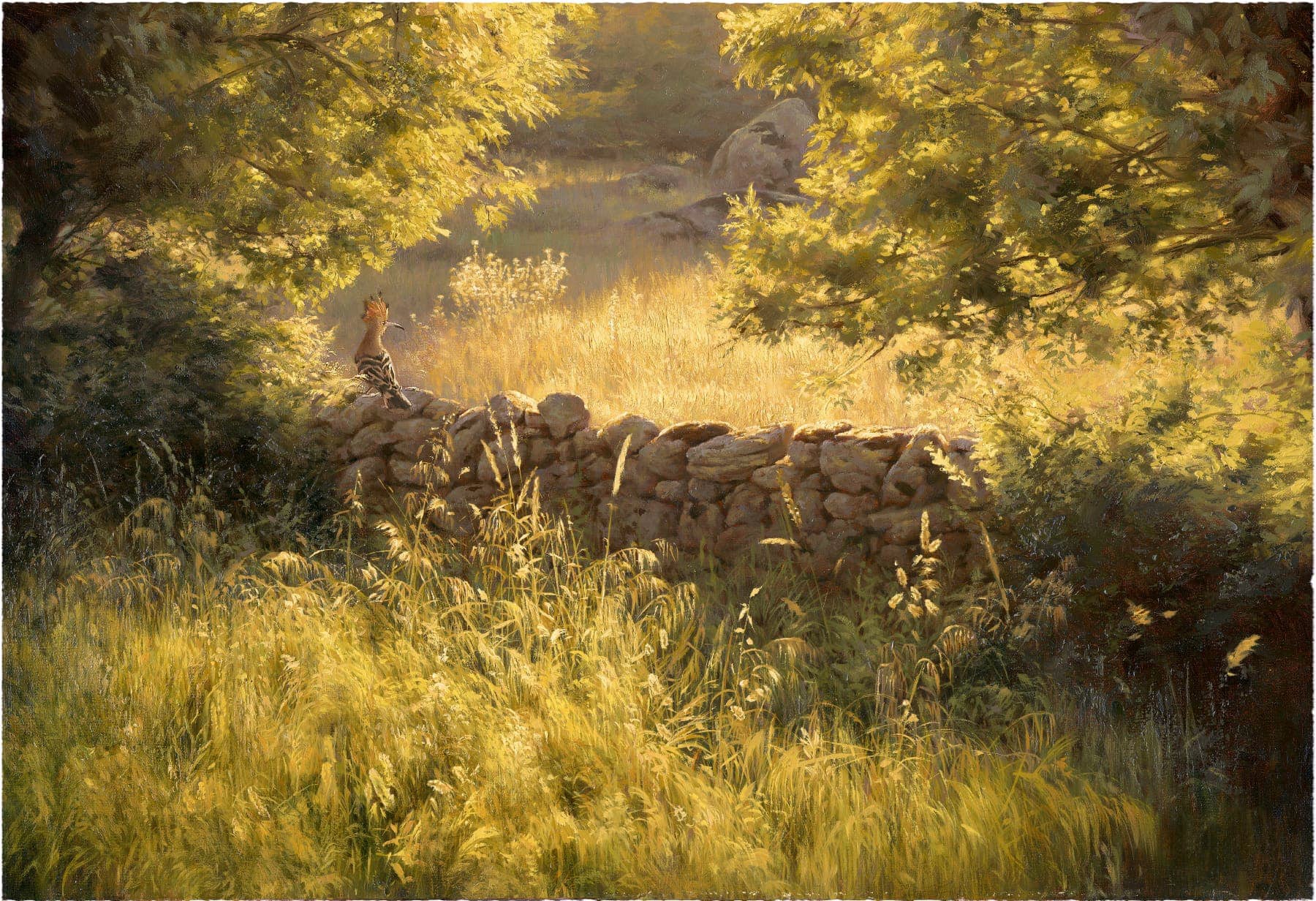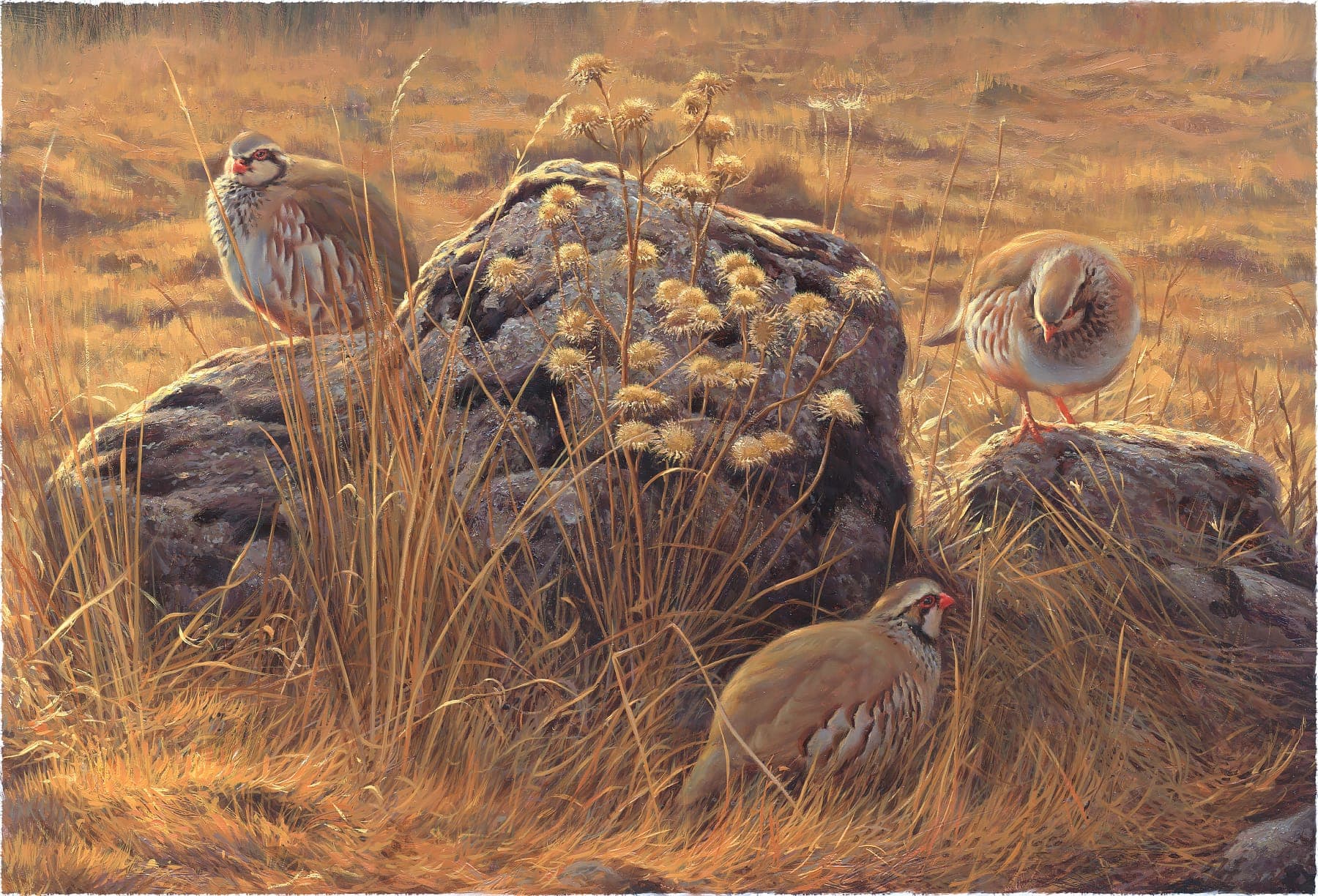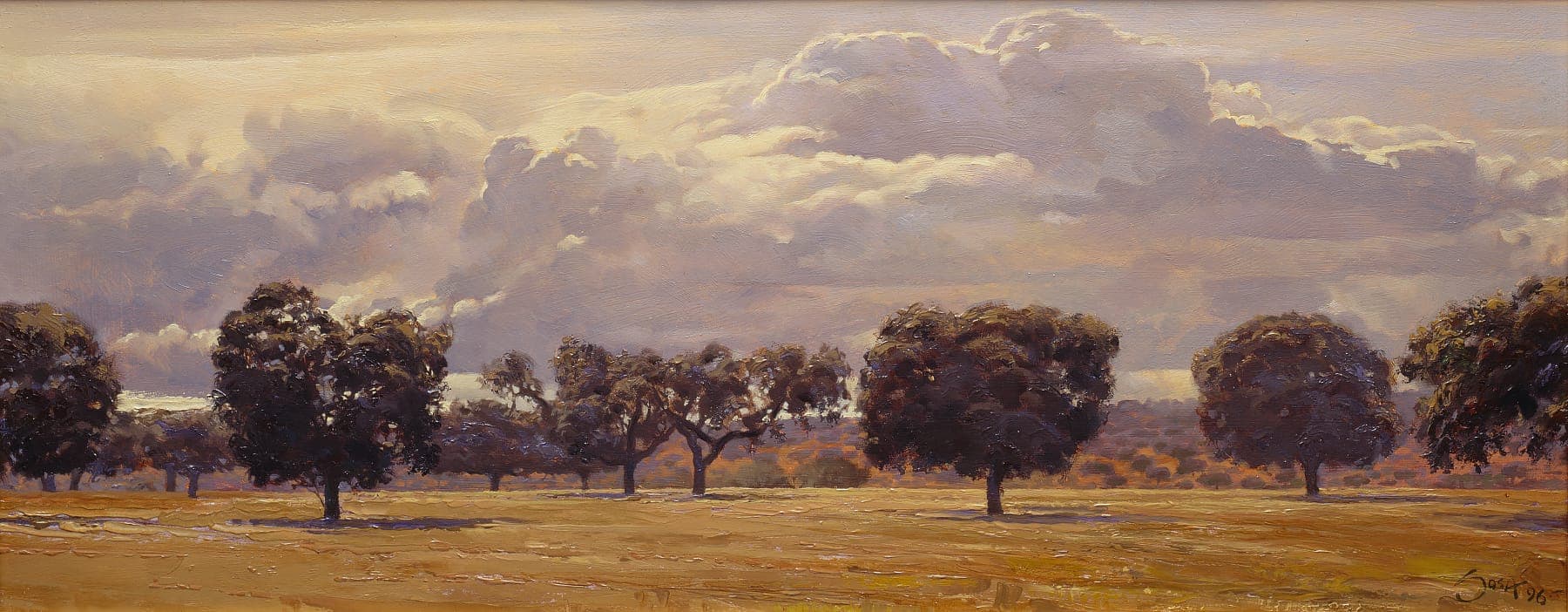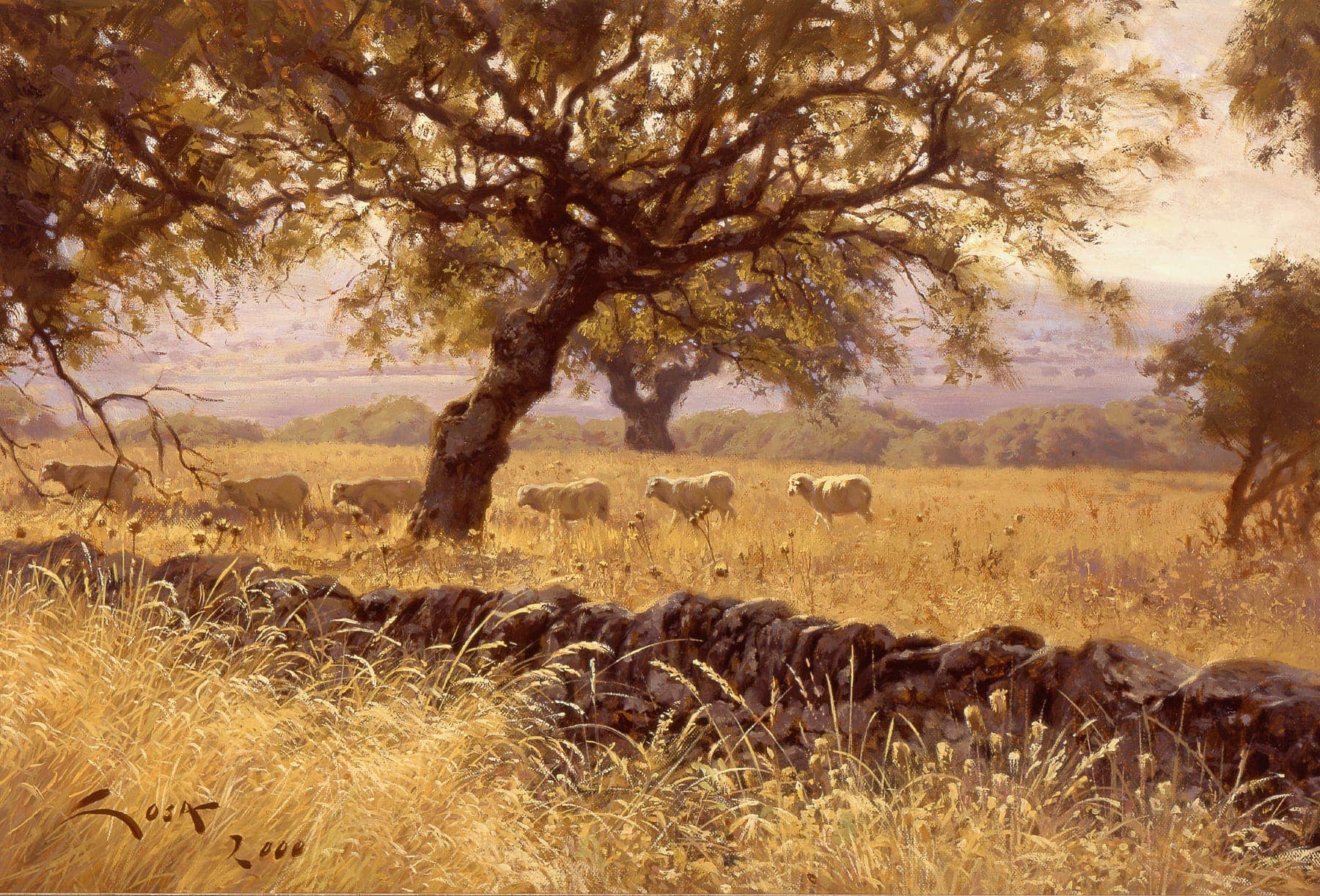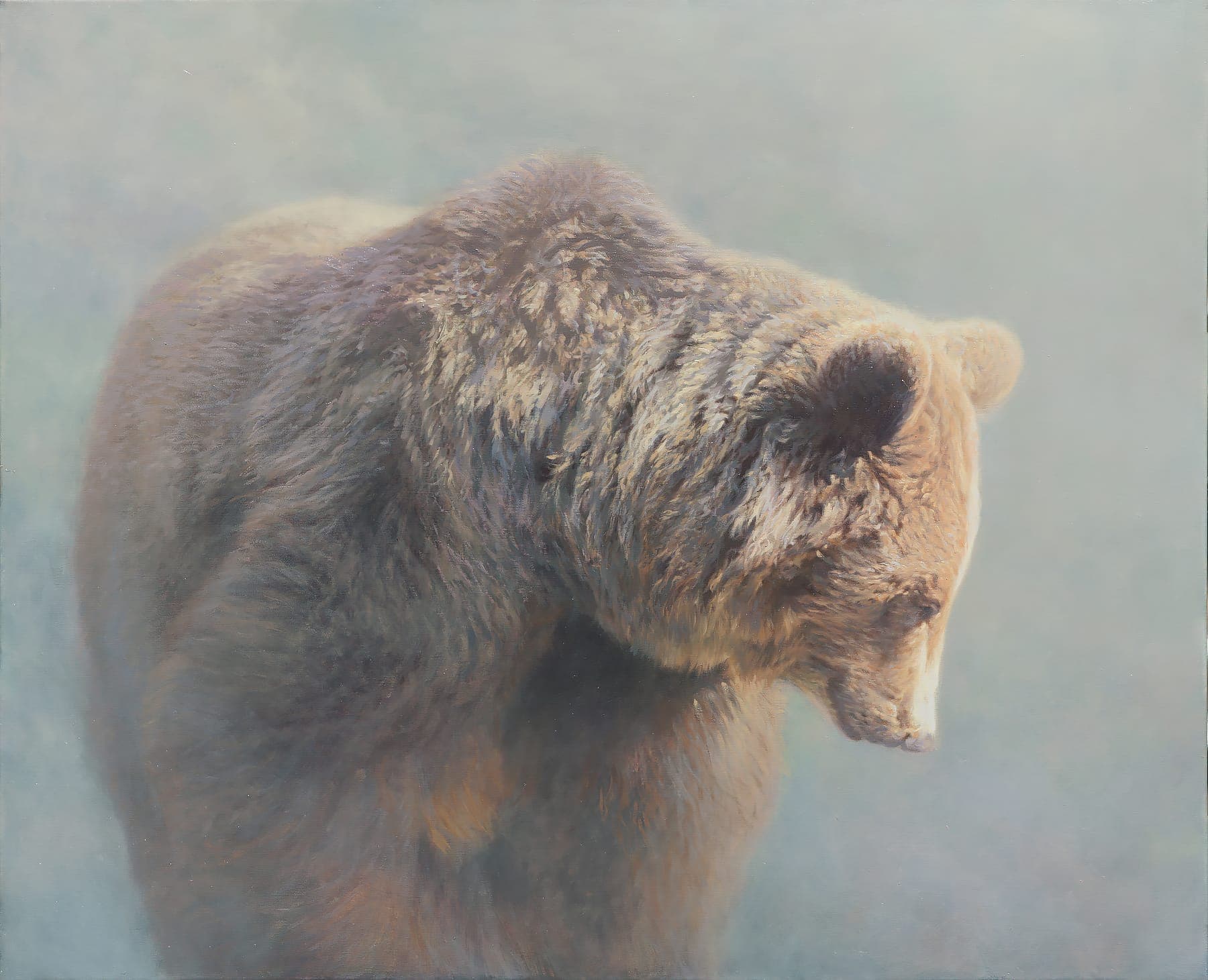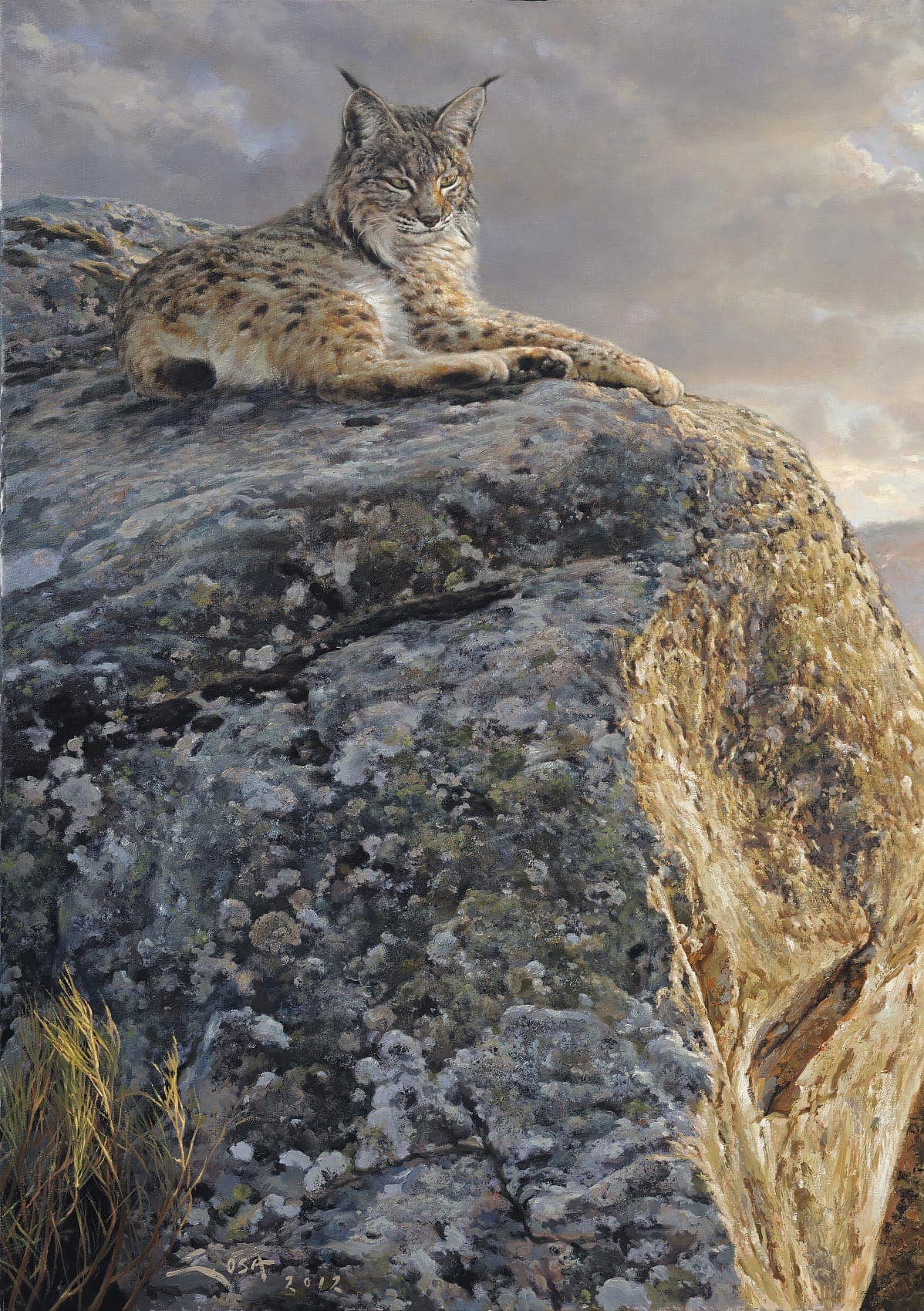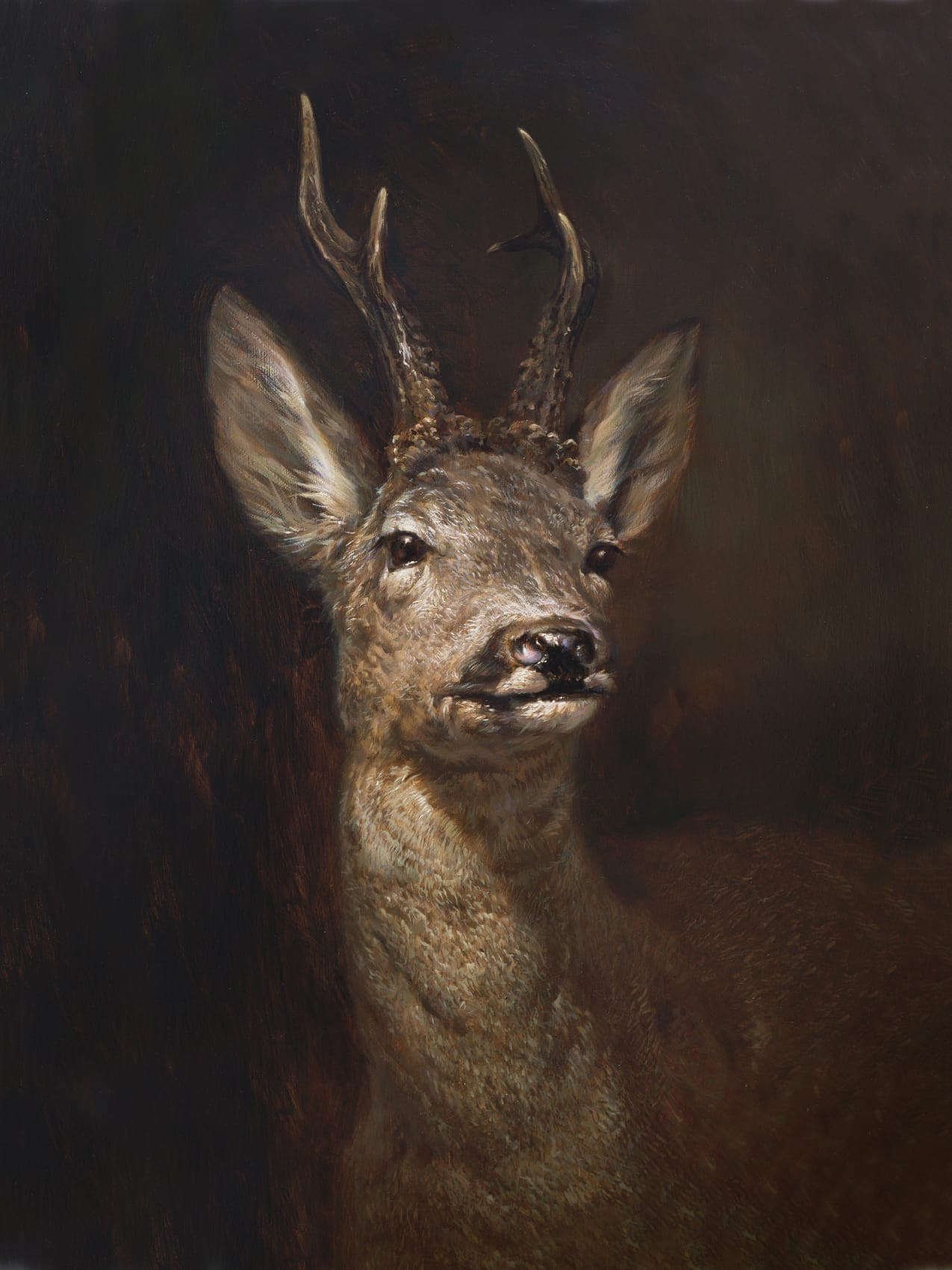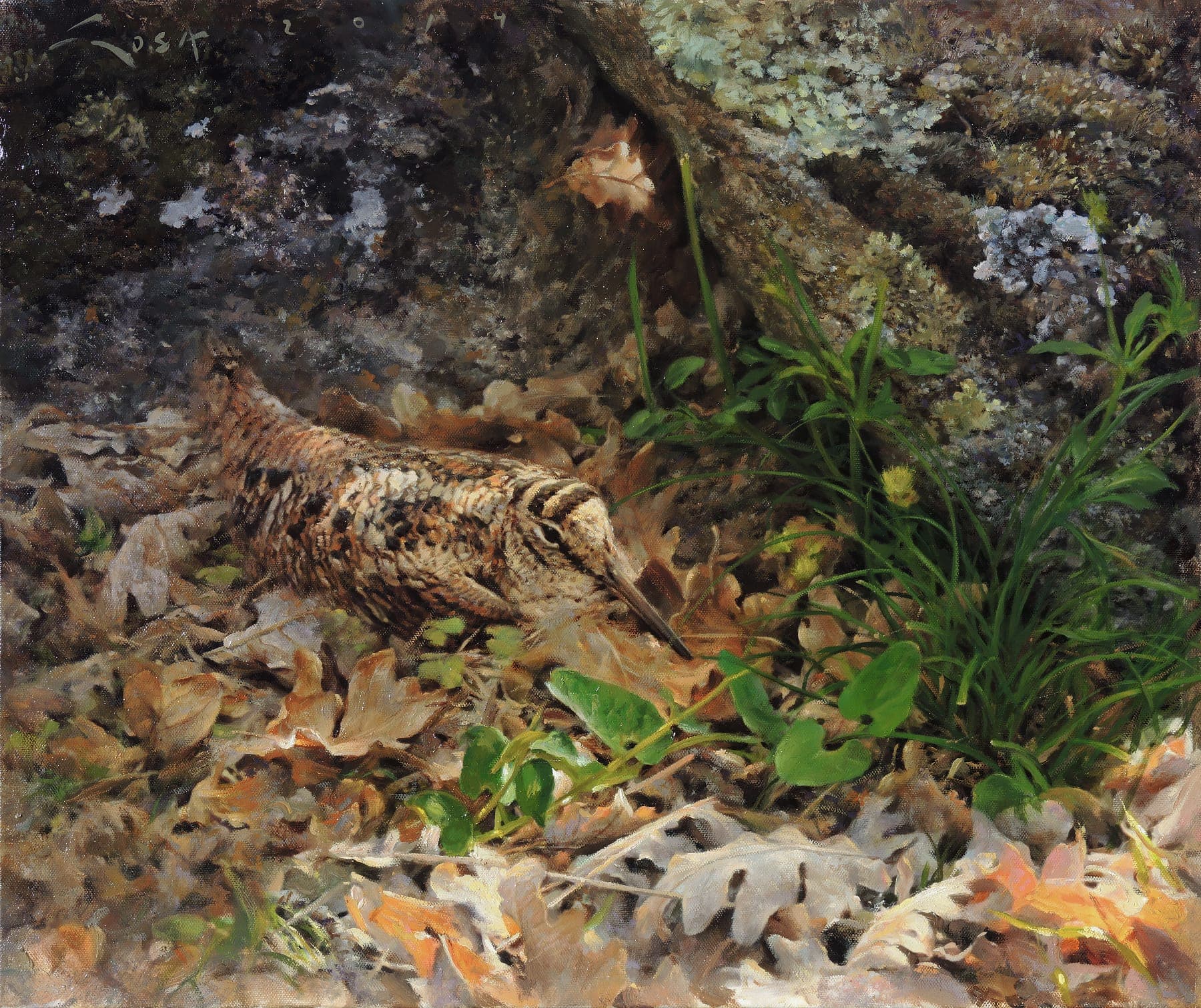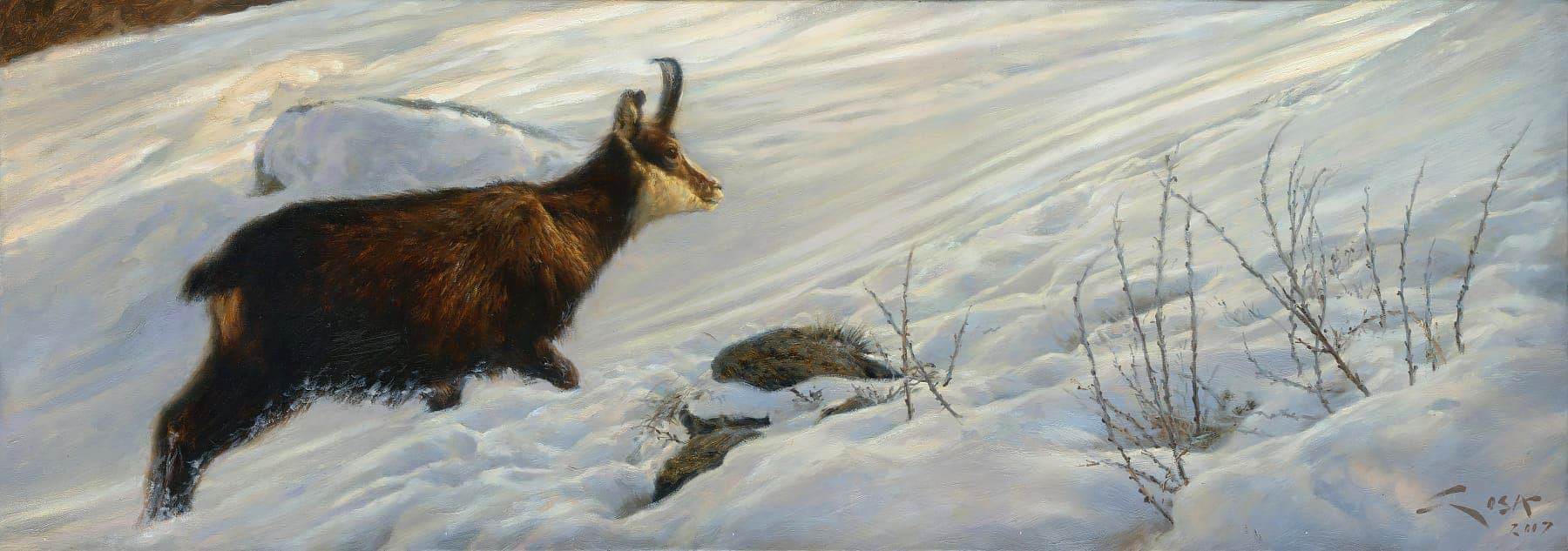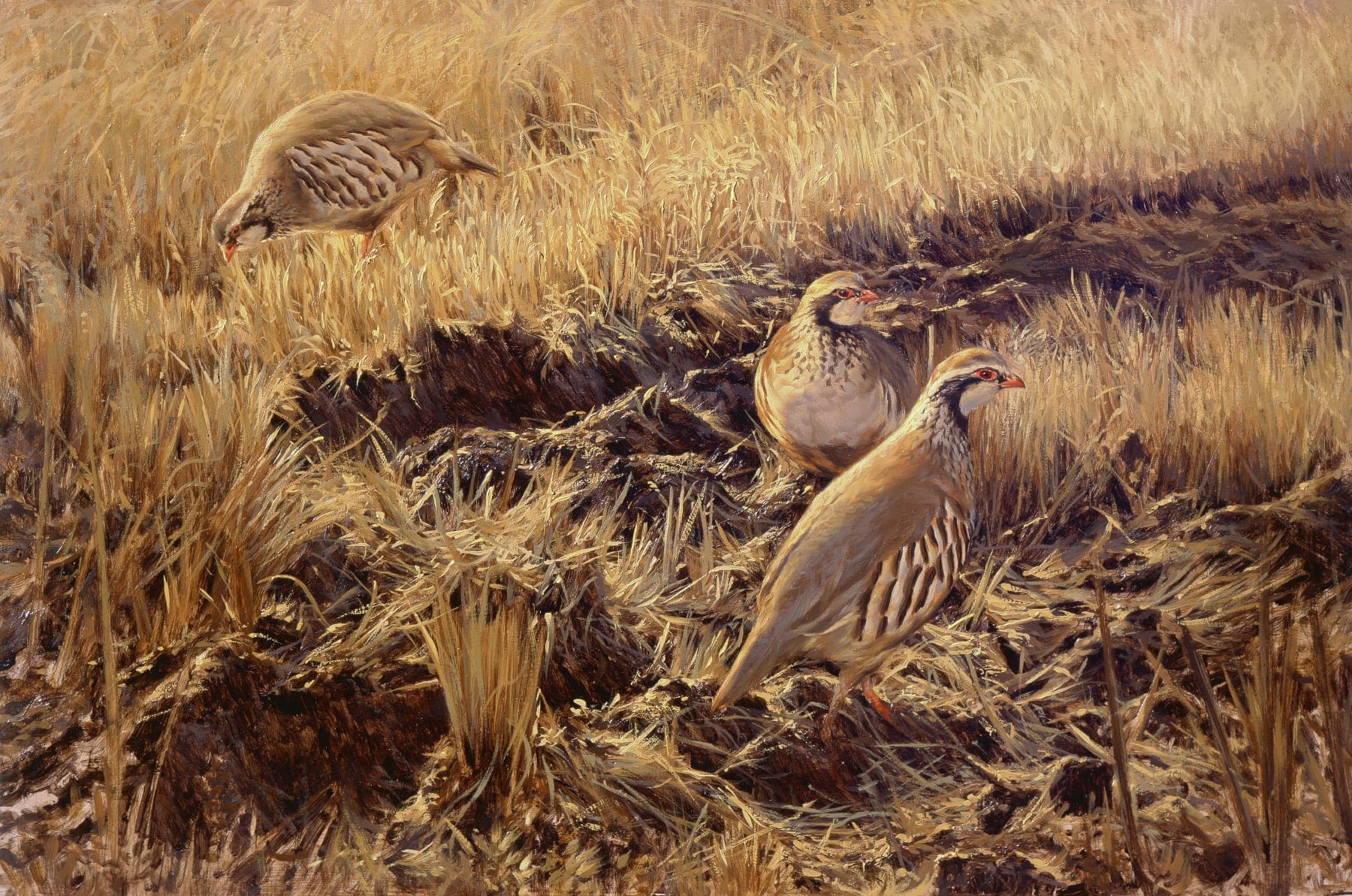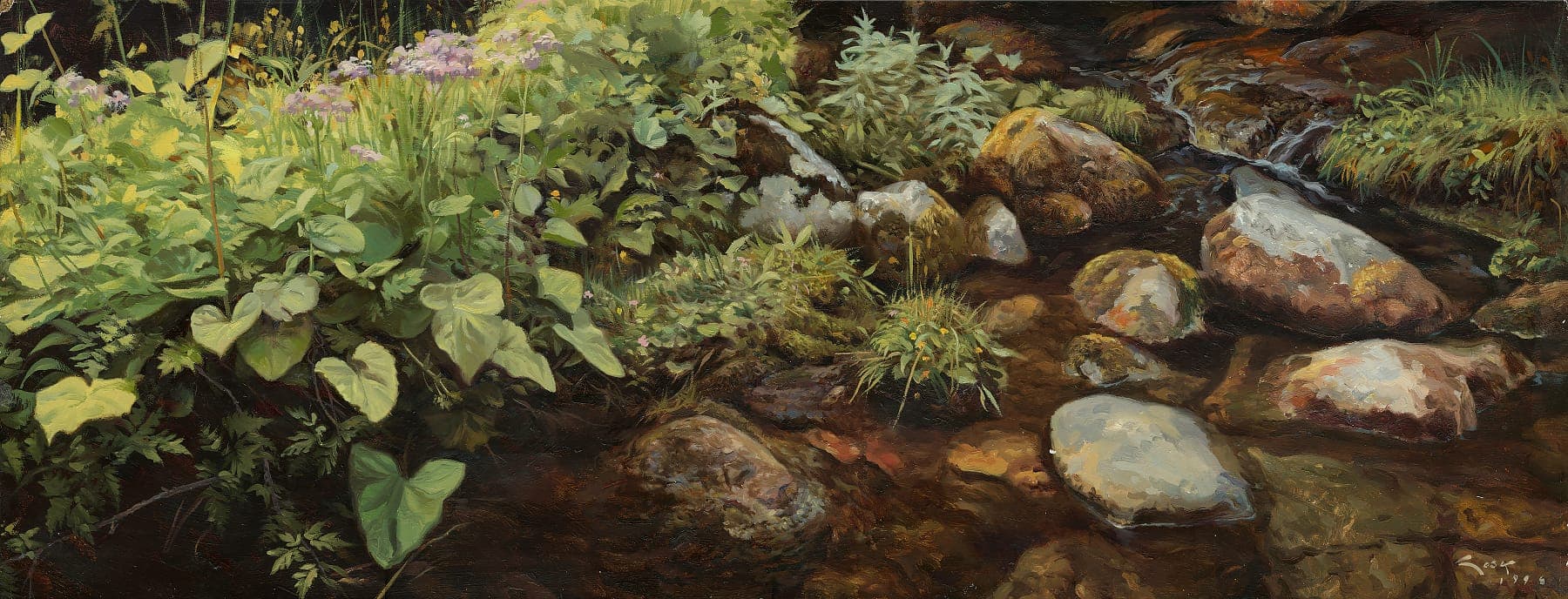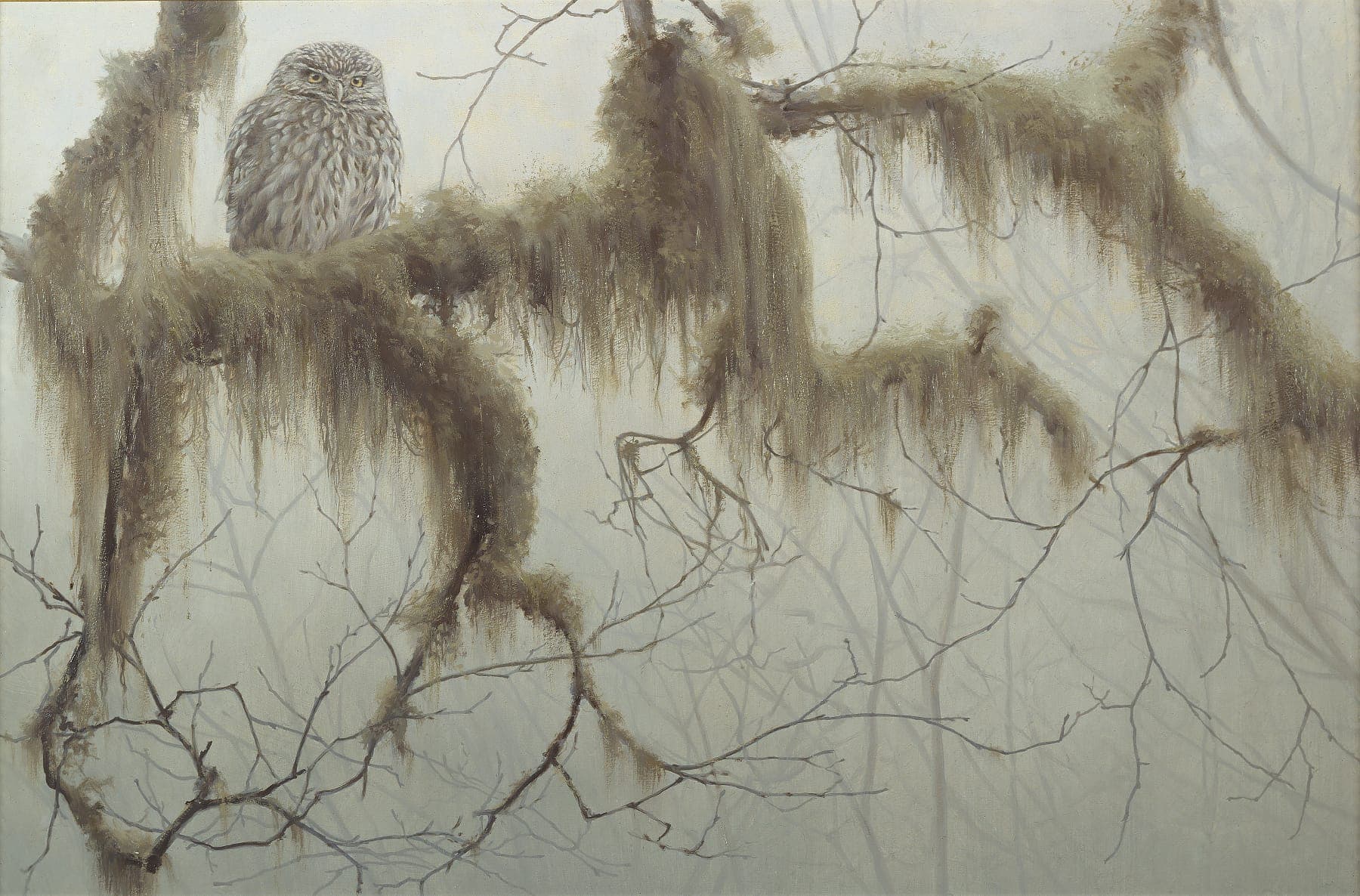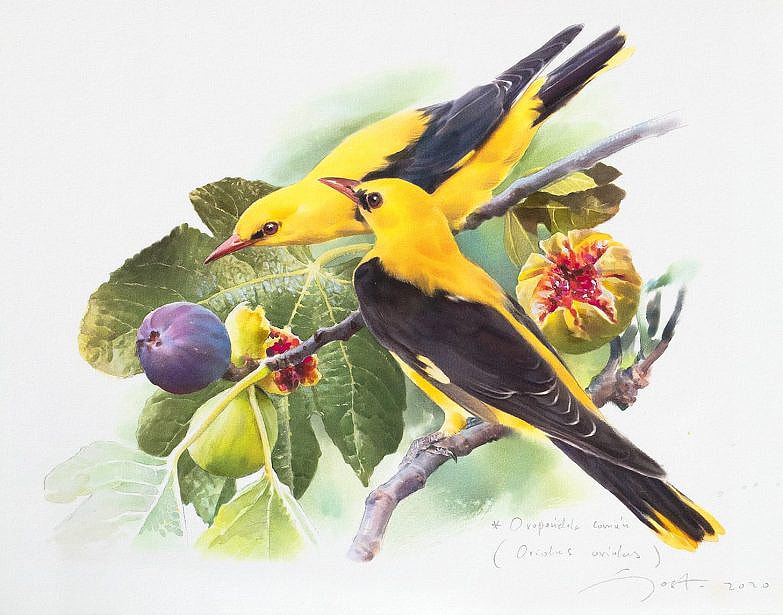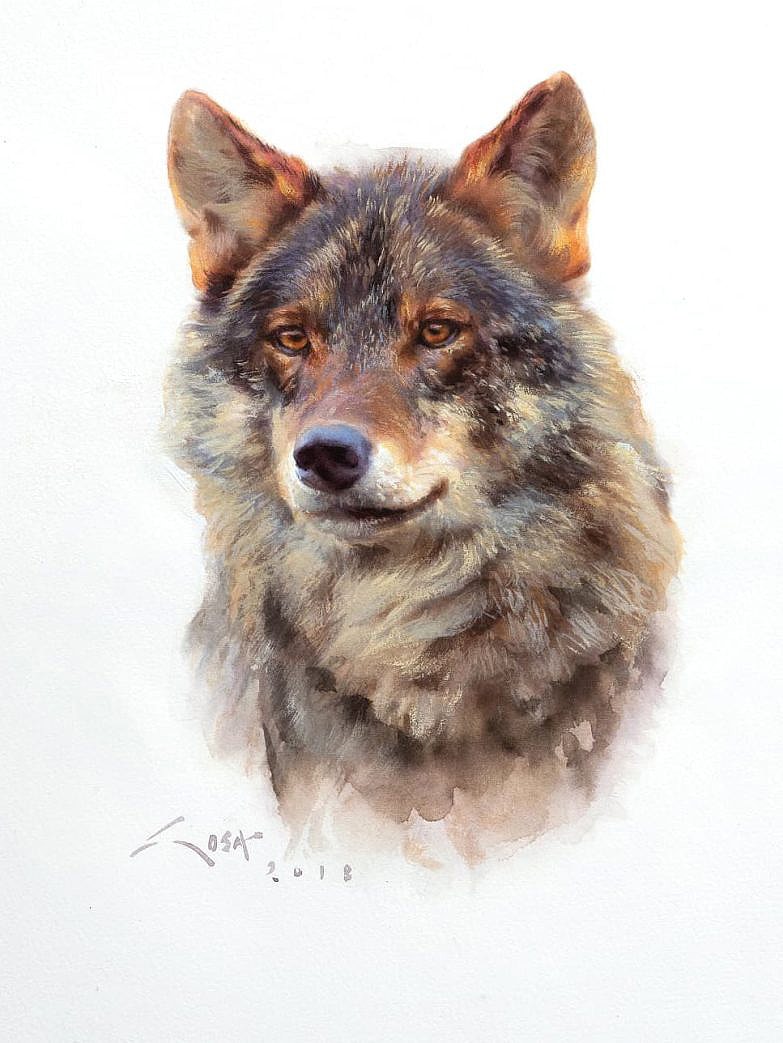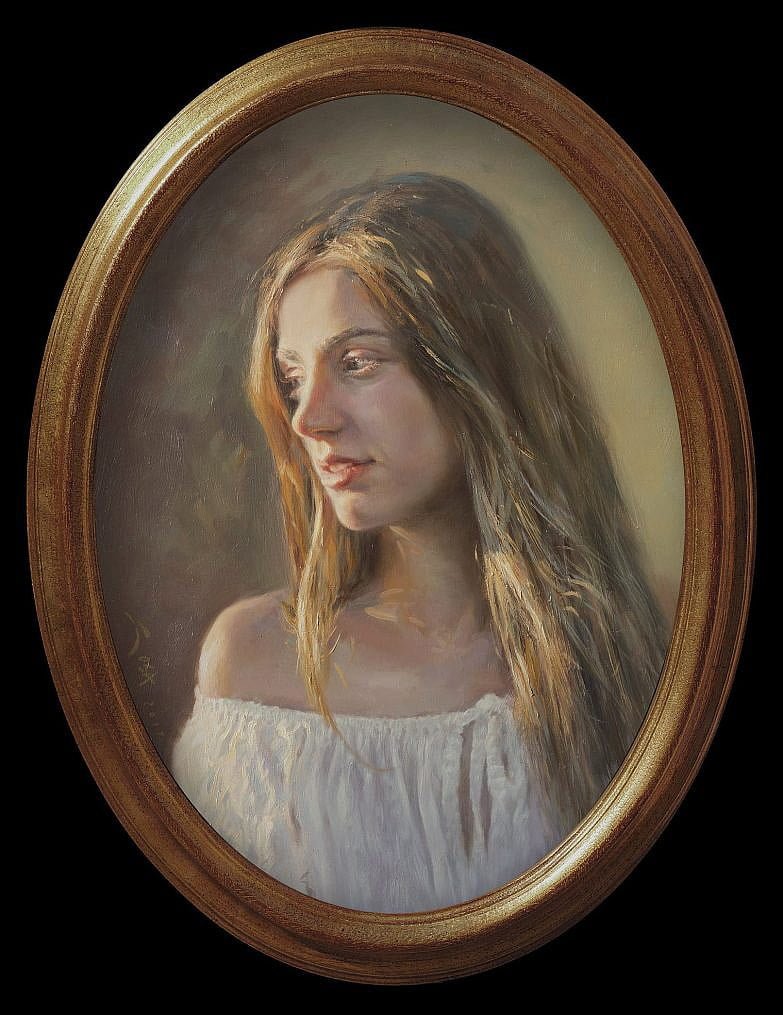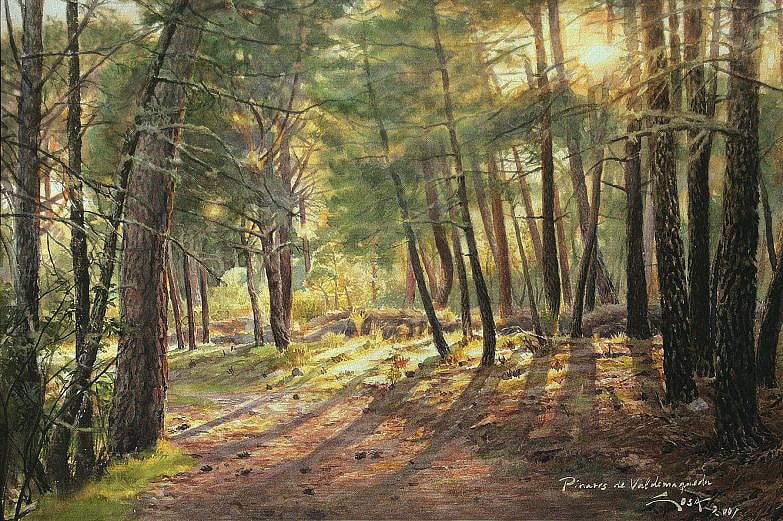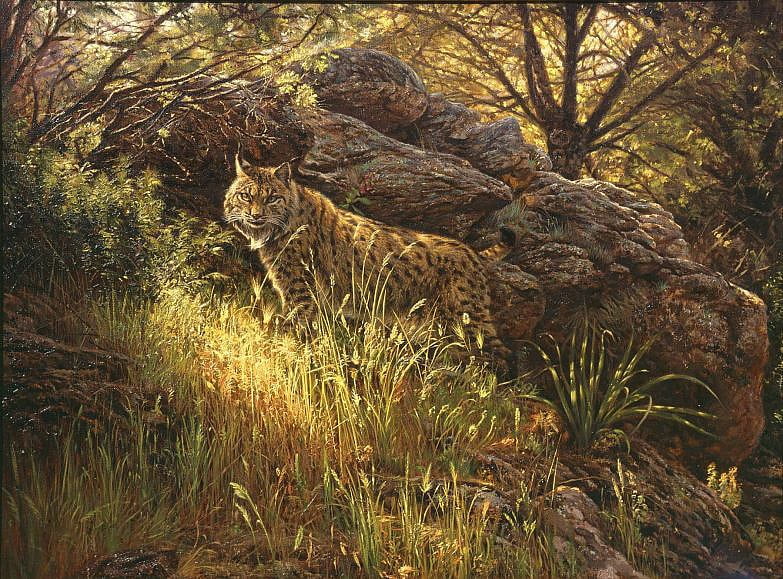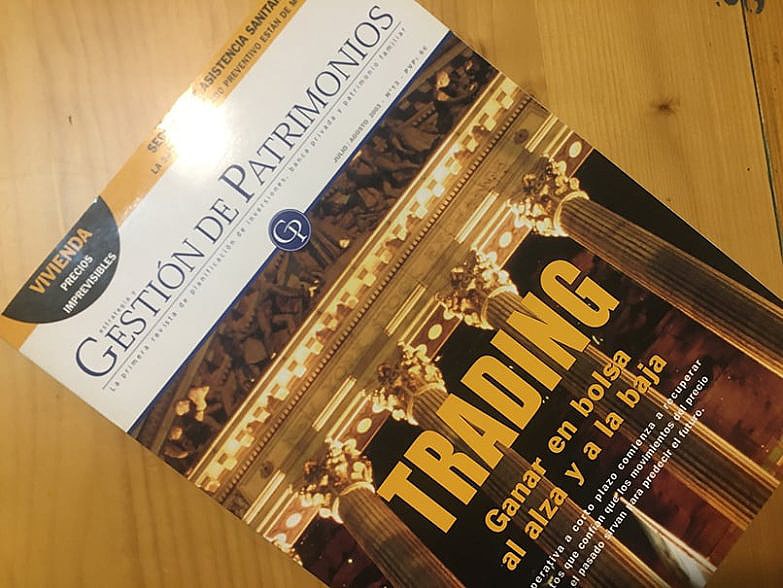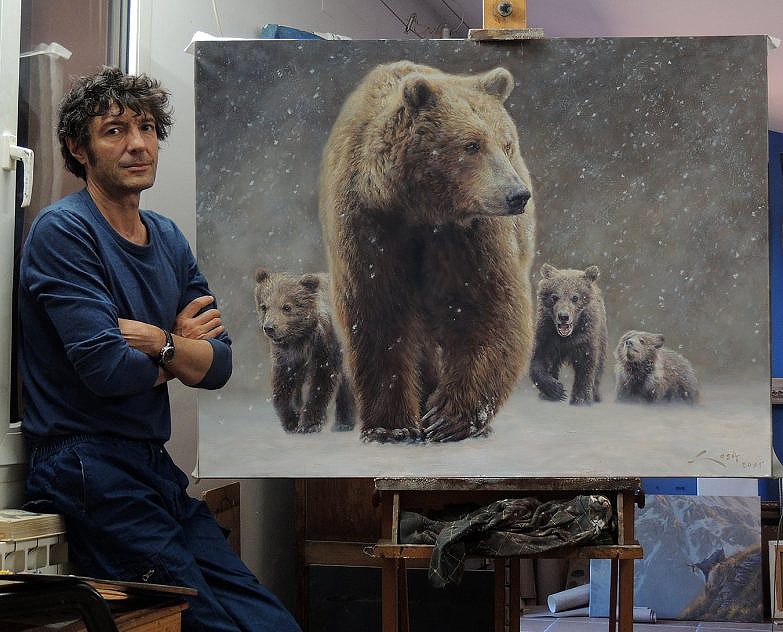WELCOME TO THE ART GALLERY OF MANUEL SOSA
Pioneer in the painting of wild nature in Spain. My passion for painting and a lot of countryside have been the necessary ingredients to paint the oil paintings that hang in this exhibition, in which unpublished images representing the "wildest" of Nature are exhibited.
MANUEL SOSA. Painter & Biologist
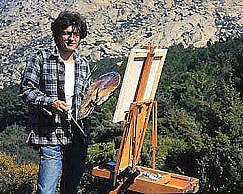
A pioneer in the painting of wild nature in Spain, Sosa has already lost the fear of someone who ventures for the first time into a totally new pictorial genre in our country. A deliciously refreshing genre for painting, often so saturated with the same motifs. Betting big, he abandoned the comforts of the city years ago to soak up the countryside. And his paintings transpire it.
His paintings smell of ears of corn, of golden sunsets among holm oaks, of wild wolves, of partridges, of healthy countryside, in harmony with man. Countryside on all four sides, moulded with a Mediterranean palette of ochres, siennas and olives, painted with a mastery that makes us experience the magic of being there.
Review of the Exhibition "VIRGIN LANDS".
in the Durán hall in Madrid.
Born in Cáceres. More than twenty years as an illustrator of Wild Nature with hundreds of works published in the most prestigious publishing houses in the country: Incafo, Natura, Periplo, Plaza & Janes, Planeta, Salvat, El Pais, Santillana, Anaya, etc... collaborating in five encyclopaedias, more than thirty books, hundreds of posters and brochures with illustrations of the most diverse themes. As a painter, since 1998: five individual exhibitions and seven collective ones. Awarded the highest distinction by the European Academy of Arts. Commissioned by the "Fundacion Marcelino Botin" for the oil painting "El ultimo Lince" which today hangs in the living room of the house of the King of Spain Don Felipe VI.
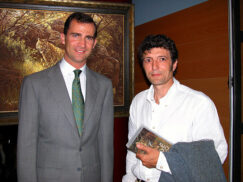
He has worked on an ambitious project commissioned by the USA for the publication of a voluminous book or Elephant book entitled Sosa's interpretation of Audubon's Birds of North America" which will bring together paintings of all the birds of North America. Sales worldwide through his own internet gallery, his paintings are in private collections in the USA, Canada, Holland, Spain, Germany, France, England, Switzerland and Turkey.
CRITICS
MANUEL SOSA, the mystery of Nature.
In Manuel Sosa's painting there is art, beauty, composition, and all of this in large doses.
In Sosa's paintings, any of the many ingredients that make up the wild world take on an unusual vigour. Whether they are simple grasses parched by drought, or the scrutinising gaze of a wolf observing us from the solitude of the mountain. The secluded corner of a forest, a discreet pair of hoopoes, a ford of red-legged partridges sowing their seeds, any fleeting moment in the hidden world of wildlife, is sublimated to the category of magic. It was long overdue for someone to break into our pictorial landscape, someone who would take us into the fascinating Spanish Nature in this way. Each painting by Manuel Sosa is a window that opens onto the deepest and most ancient mystery of the planet, the mystery of Nature".
Borja Cardelús
Former Secretary to the Ministry of Environment
Director of the TV series "La España Salvaje".
If, as the classical saying goes, power is a quality of the soul, it is appropriate to speak of Manuel Sosa as a virtuoso. All his work produces the sensation of innate ability, of easy strength. But as all first impressions are deceptive, for behind his brushstrokes lies an exclusive dedication over the last twenty years to the elusive world of art of, by and for nature in Spain.
After his first contact with the marshes of the Cadiz of his childhood, he felt the compulsive and irresistible need to capture what he saw, not in a descriptive but in a joyful spirit, almost a tribute to the most beautiful things, a tribute to a world that was passing away. Thus his first sketches of Flamencos, Terns and Avocets were born, already perfect in technique.
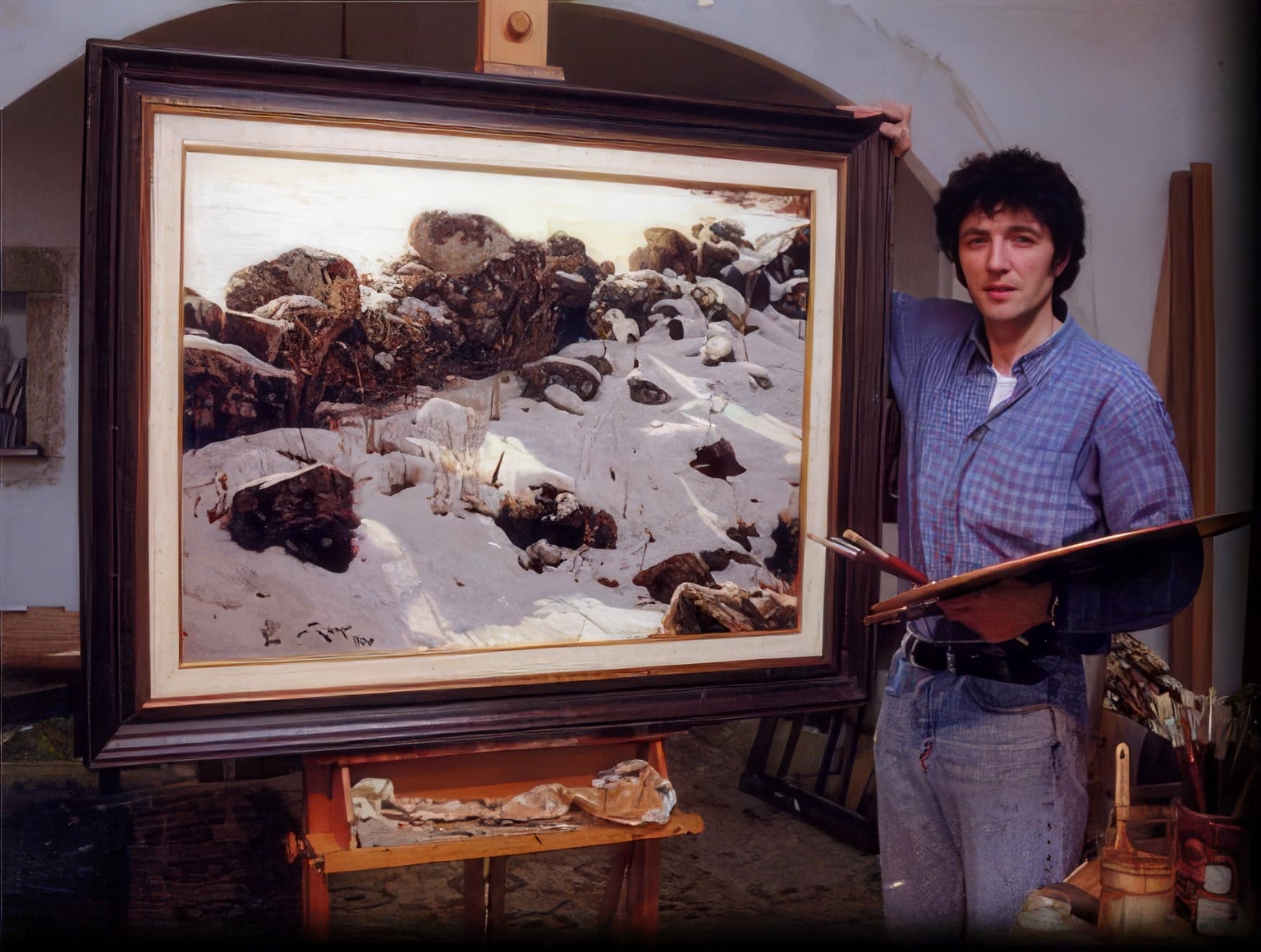
All his later activity was centred on the plastic representation of the natural world in its most diverse manifestations. Using all kinds of techniques, formats and styles, he appeared in various publications from the age of fifteen and quickly became one of the leading figures in Spanish naturalist illustration. He collaborated with Incafo, Natura, Periplo, Plaza y Janes, Planeta, Salvat, El País, Santillana and Anaya with illustrations on a wide range of subjects. He makes posters, takes part in documentaries and also has time to finish Biology and spend time in the Doñana Reserve, enjoying and learning.
He has also travelled much of the unknown world in search of that ephemeral sensation produced by the contemplation of wild nature: twice to the Amazon, North America, the Pacific islands, Scotland and much of Africa. He is also an accomplished computer graphic artist and animator, capable in this as in all other artistic techniques, of pushing his possibilities to the limit. A few years ago, after a last great collaboration with Borja Cardelus on his encyclopaedia and television series La España Salvaje, he decided to put illustration on hold, swapping the big city for a rustic farm in the heart of the Guadarrama to devote himself fully to painting, following, at last, his masters: Shiskin, Carlos de Haes, Harris Ching, Albert Bierdstadt, Caspar Friedrich, Aivazovsky. From this challenge comes this work which we can contemplate with rapture; these oil paintings, beautiful but strong, without compromises or flowers. Landscape and fauna. No man. Only nature.
Critique of Manuel Sosa's work / Madrid, April 1998


